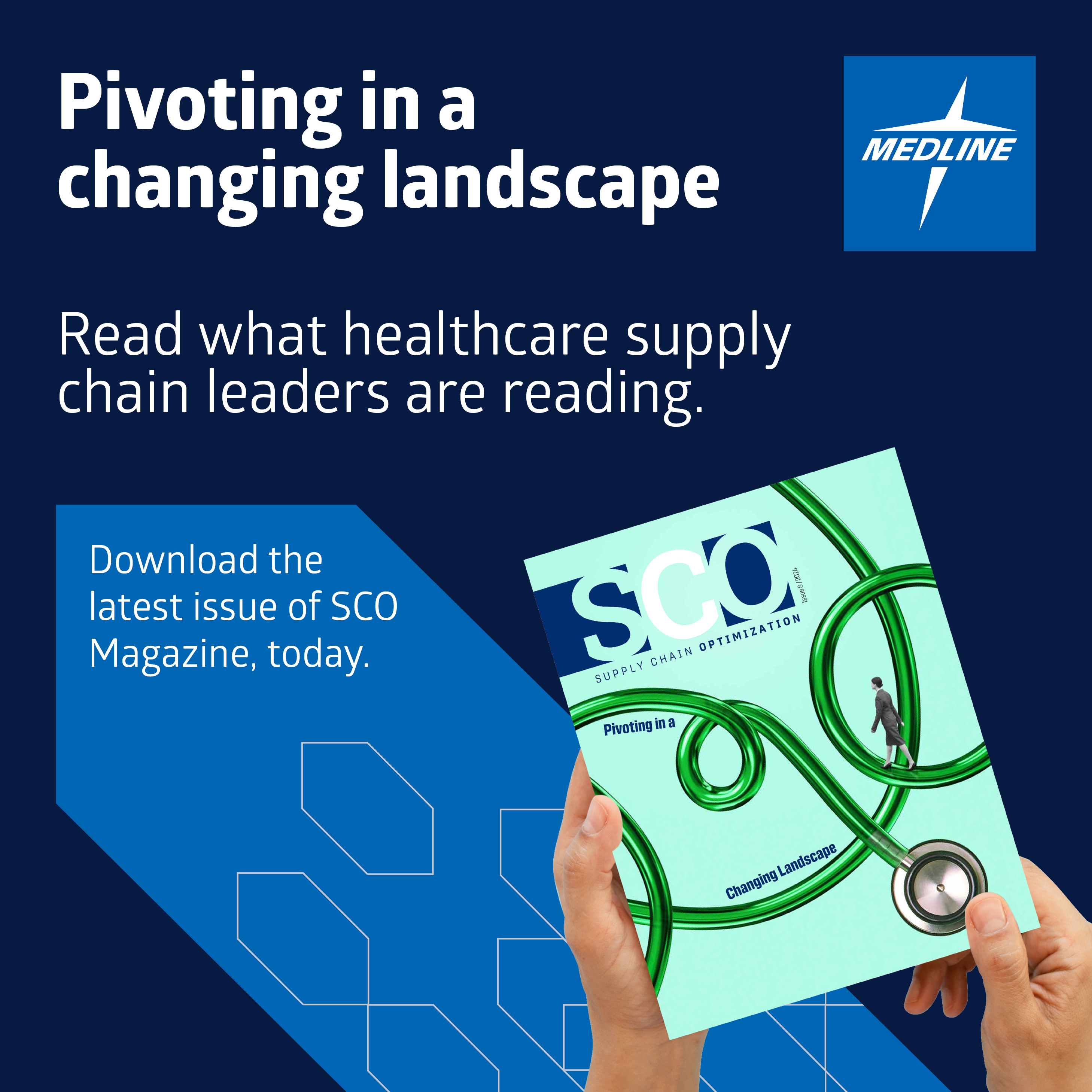2021 trends: Building supply chain resiliency

A look at how acute care settings can continue to advance their supply chain strategy
By Medline Newsroom Staff | December 22, 2020
COVID-19 has upended much of the healthcare world, and in the case of supply chain leaders, they found themselves working towards a newly-defined goal: supply chain resiliency. Caregivers need to have the key supplies on hand, and to avoid some of the shortages seen last spring, health systems are building greater flexibility and strategic thinking into their supply chains.
Here’s a look at a variety of ways health systems can fortify their sourcing and storing in 2021.
Plan for the next pandemic
As the country continues to respond to the current pandemic, health system administrators are fortifying their supply chains to be better prepared for the next national health emergency. Part of that game planning involves reviewing state and local guidelines, as some states differ in the amount of personal protective equipment (PPE) they require hospitals have on hand. The setting of a health system factors in as well: rural or city-based hospital systems may have very different needs when it comes to space and patient population.
Hospitals and IDNs are also drawing up plans that leverage tools provided by their strategic partners. Some systems cannot physically hold the inventory on hand that they want in case of a future emergency. That’s where third-party logistics (3PL) and other tools come in.
Some forward-thinking systems are already taking advantage of this capability, and 3PL adoption is expected to grow in the coming year. As 2020 has demonstrated, supply chain leaders need the ability to confidently forecast, store and allocate supplies according to their specific burn rates and supply needs. Medline is storing more than 20,000 pallets of customer owned product in its distribution network.
In addition, Medline has built a supplemental model that can also support customers that provides key categories of PPE supplies.
“In an effort to provide an alternative to Medline’s 3PL model, the company has started to build out the Customer Emergency Response Tool,” says Casey Guth, senior director of business administration at Medline. “The unique value of this tool is that it frees up space needed to store inventory, while also freeing a health system up from the ownership or management of those supplies. All while still allowing them quick access to these items if needed.”
Rethink your models
In previous years, health system administrators focused on consolidating ordering and standardizing purchasing to lower costs. Going forward in 2021, many are taking a much larger leap and are consolidating their whole service model. Functions like receiving, distribution, clinical engineering and the mail room were previously spread out across a health system’s geographic footprint. Now, increasingly, forward-thinking health systems are consolidating these departments into a single location.
To get the most out of this consolidated model, however, many systems have found they need to rely on their closet vendor partners for help strengthening and refining their supply chain contingency plans. As Medline continues to make substantial investments in building out its own warehousing capabilities, customers are leaning on them to assist in their reevaluation of where and how to store and move supplies.
Embrace strategic thinking
Supply chain strategies have come a long way in the last 10 years, but many systems are still stuck in reactive modes. While it would make sense that the cost of a product would be a paramount concern, many administrators still don’t weigh the cost against how a product is actually used. An inexpensive product can still be costly if it’s seldom or inefficiently used. As the cost of supplies comes closer and closer to the cost of labor for hospitals and health systems, supply chain teams need to know where their most ordered parts are going and how they are being used. Better tracking technology can help uncover these details and guide strategic decision making.
The pandemic has forced everyone to evolve.
Supply chain leaders have an incredible opportunity to build upon new thinking and adaptability by challenging internal teams and outside partners to never stop evolving to make supply chains more resilient in the coming year.
Learn more about how Medline helps systems improve operational and financial outcomes.
Medline Newsroom Staff
Medline Newsroom Staff
Medline's newsroom staff researches and reports on the latest news and trends in healthcare.
